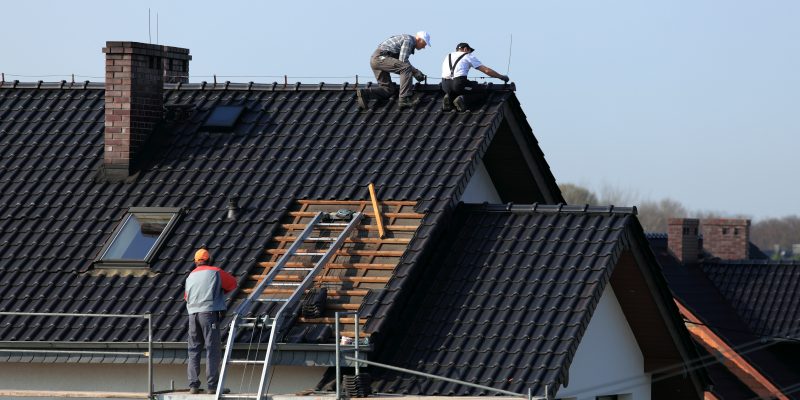For some, the replacement of residential roofing is an extremely tedious task due to the complexity of the logistics, especially when it comes to choosing the right materials, contractors and roofing systems. However, by separating priorities and understanding the pros and cons of potential roofing systems, the process is dramatically simplified.
People tend to also forget about their roofs until significant problems such as leaks and pooling start to occur. Regardless of whether you have a commercial or residential infrastructure, roof repairs and replacements can be expensive. Since roofs have a useful life span of more than a few decades, it can be difficult to determine whether they need replacement or repairs which extend their life.
However, it is possible to determine the best course of action by following these guidelines.
Be Proactive
If your roof is around 15-20 years old, it is reaching the end of its warranty and therefore it is necessary to check it even if it does not have leaks, all in order to take advantage of the warranty which solves potential problems during favorable weather conditions and avoid unpleasant surprises.
If you have membrane roofing, it is important to check it for damage caused by tree limbs, deterioration, leaks, problems with seams and welds, and pooling/ponding water. If signs of ridging/splitting in built-up roofs or significant shifts are found which have affected the integrity of the roof, it is imperative that you schedule a replacement as soon as possible.
One of the suggestions we can make in these cases is that you hire an expert for the task that is able to locate the specific issue and come up with an action plan on how to salvage the roof. Additionally, an expert can go above and beyond just simply glancing but actually discover serious problems and then determine the best method to solve them. The main benefit of doing this is the budget since it gives you the chance to start planning ahead and budgeting for replacement jobs on time rather than suffering ordeals later.

Not All Leaks Are Equal
While a small leak may or may not be a minor problem, it is recommended that you check your roofing system for physical damage, ponding, or problems in the seams and welds near the leak. If you find problems, it is advisable to carry out repairs. However, if you find multiple or repeated leaks, the problem is very likely much more serious than you think. We do not recommend that you inspect them repeatedly, as this will be extremely costly. Instead, replace your roof.
Another thing that you should always keep in mind is also what the roof is protecting since while a leak in a warehouse may not be a big deal, in a hospital it involves very costly property and operational damage. What may be under your roof can make a difference in your decision-making.
The Costs of Waiting
If you ignore the problems your roof is experiencing, the consequences will be disastrous. For example, a small water leak may be rotting your rafters and support beams to the point of compromising the integrity of the building or causing other costly damage that will go unnoticed at first but will manifest itself later. Don’t let that happen to you.
Use Your Warranty
If your roofing system is having problems but has a warranty, take advantage of it. Determine what may or may not be covered so that you understand your rights as a beneficiary. However, take note of the following: some roofing material manufacturers do not cover common problems or are not in active business. In such cases, replacement is the best solution.
Replacement Considerations
If you require a roof replacement, a single-ply membrane solution is perhaps your best option because it is quick to install, durable, effective, and extremely inexpensive. These membranes can be applied directly to existing roofs, thus drastically reducing removal and construction costs. Because membrane roofs have many options to choose from, you should consider the following when deciding:

- Basic needs.
◦ What specifically is protecting your roof? A cheap roof can become expensive if it suffers from problems that can cause chaos or property damage in factories, hospitals, or any other important place.
◦ Do you want multiple color and/or design options? A fully adhered membrane roof can be very aesthetically attractive.
- Uses.
◦ Will they walk on top of the roof or deal with high-wear demand?
◦ Does the roof include a solar array? Moving the array for repair or replacement of a cut-rate roof can be very expensive
- Durability.
◦ Make sure the roof is made of the highest quality materials and passes a drill test (Demonstration should be done by a supplier).
- Geographic location.
◦ If you live in a cold climate, your roof will need more insulation. In the case of places with humid climates, your roof will need greater durability and waterproofing capacity.
◦ Sunny climates would benefit from UV resistance or a variety of reflective colors for energy consumption benefits.
- Warranty.
◦ Be sure to compare several warranties that may or may not be extendable beyond a standard number of years a warranty covers and be sure of the coverages. Ask to see examples of similar methods in similar environments to see how your new roofing system can perform and last.
◦ Look for a roofing company with a long history of success, not because they will offer you a better warranty in case of issues, but because their longevity is an excellent testament to their quality.
Regardless of how old your roof is, don’t neglect it, as doing so may pose significant problems down the road. If it’s time for a replacement and you want to fully depend on your roof during bad conditions, a single-ply membrane is your best bet, as it is extremely durable and can withstand even the most inclement weather and wear.






